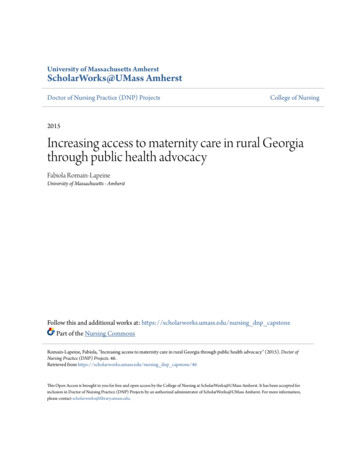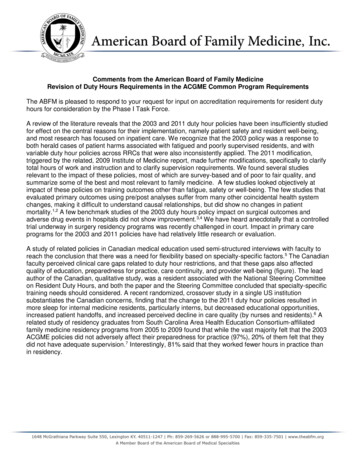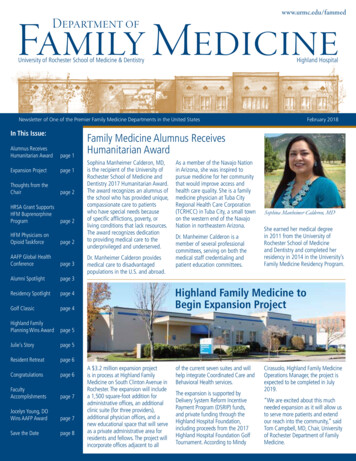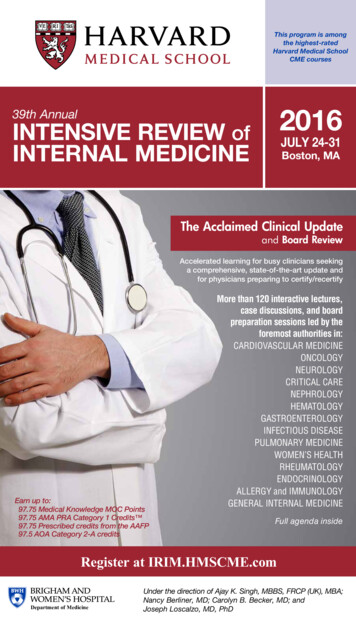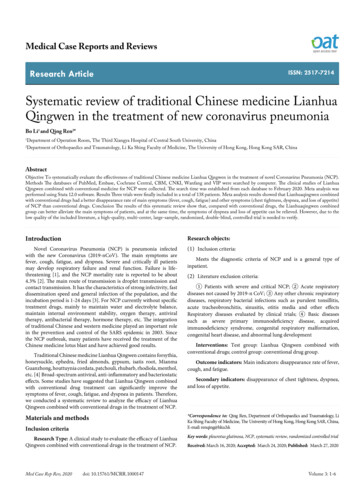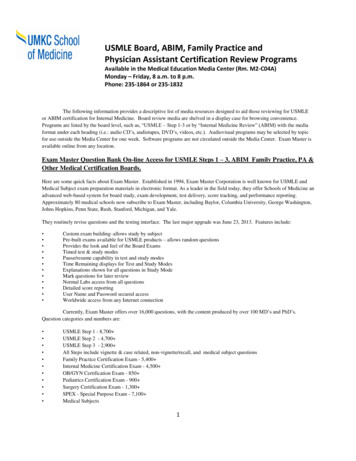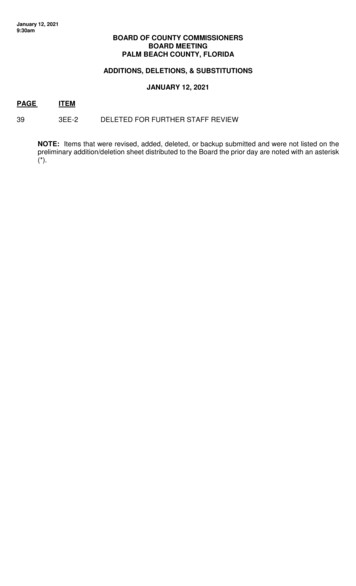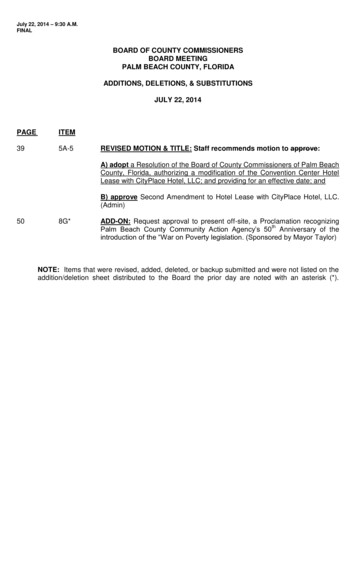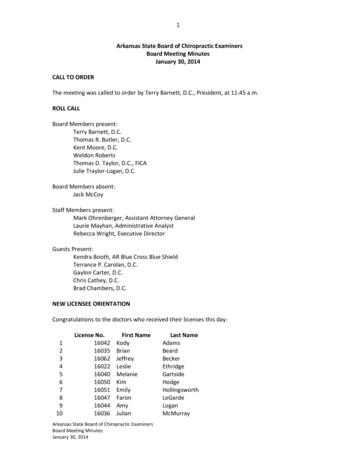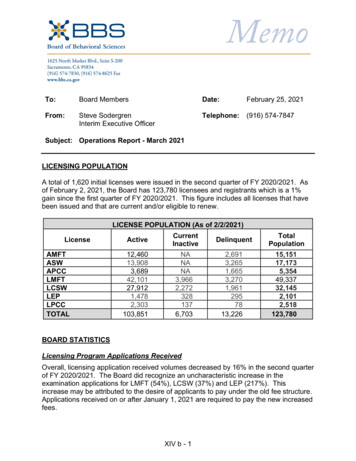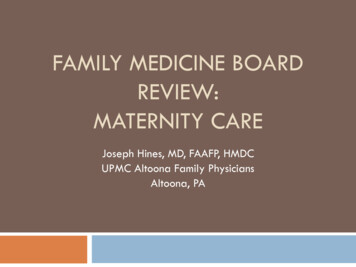
Transcription
FAMILY MEDICINE BOARDREVIEW:MATERNITY CAREJoseph Hines, MD, FAAFP, HMDCUPMC Altoona Family PhysiciansAltoona, PA
Conflicts of Interest/Disclosures I have no disclosures or conflicts of interest.
Objectives Review basic prenatal care including routinelaboratory work up, diagnostic tests, and screeningrecommendationsDefine the various levels of hypertension inpregnancy and their managementDescribe the diagnosis of diabetes in pregnancyand its managementRecognize the various complications that can occurduring delivery and how to manage them
Importance Maternity care This module covers prenatal care,antepartum care, and postpartumcare. It does not include themanagement of high-risk pregnancy,but may include the management ofacute and chronic disease inpregnant women. Topics coveredinclude such things as screening,nutrition, management of labor anddelivery, complications of pregnancy,and key concepts of advanced lifesupport in obstetrics. Selectedneonatal problems such as ABOincompatibility and neonatalresuscitation may also be covered.
Routine prenatal care Initial visit 6 to 8 weeksVisit frequency Initialvisit to 28 weeks: q4 weeks 28 to 36 weeks: q2 weeks 36 weeks: q1 week Postpartum visit 4to 6 weeks after delivery
Initial prenatal labs Blood type/Rh/AntibodyHemoglobin and hematocritRubella antibody titerChlamydia and gonorrhea Hepatitis B surface antigenSyphilis screenHIV screeningUrine cultureCervical cytology If less than 24yoIf indicatedCystic fibrosis screenPap smear (if appropriate)
Asymptomatic bacteriuria 100,000 of a single species E coli most commonHigher rate of preterm laborTreatment Cephalexin250mg PO QID x7 days
Additional screening Maternal serum alpha-fetoprotein (MSAFP) 16to 18 weeks High: neural tube defect Low: Trisomy 21 or 18
Additional screening Ultrasonography 18to 20 weeks Not recommended for routine usen Highevidence for determining placental location, fetallocation, fetal viability, and fetal numbern Not good at detecting minor fetal abnormalitiesnAble to detect major abnormalities
GBS screening 35 to 37 weeksEveryone gets screened Exceptn AnyGBS bacteriuria during the pregnancyn Previous infant with GBS sepsis Treatment Penicillin Cefazolin Clindamycin Vancomycin
Gestational diabetes Routine screening at 24 to 28 weeks Earlierscreening ( 24 weeks)n Guidelinesvaryn BMI 25 and one or more ofnnnnnnnGestational diabetes in previous pregnancyHgbA1C 5.7Impaired fasting glucoseFirst degree relative with diabetes mellitusHigh risk ethnicity (African American, Latino, Native American,Asian American, Pacific Islander)PMH of hypertension, CV disease, hyperlipidemia, PCOSPhysical inactivity
Gestational diabetes Initial test: 50g oral glucose tolerance test 135 or 140: 3 hours glucose tolerance test 3 hour glucose tolerance testn2 or more elevated values: gestational diabetesOther tests HgbA1Cn More 6.5%accurate in earlier pregnancy Randomplasma glucose 200 Fasting plasma glucose 126
Gestational diabetes Management Nutritional counselingn Medicationsnnn MetforminGlyburideInsulinBiweekly NSTs after 32 weeksGoal blood sugars No clear consensus on when to start medicationFasting 952 hour postprandial 120Delivery Manage expectantly if well controlledInduction at 39 weeks if not well controllednCesarean section if estimated fetal weight 4,500 grams
Gestational diabetes Complications MaternalGestational hypertensionn Preeclampsian Cesarean deliveryn Diabetes later in lifen FetalMacrosomian Shoulder dystocian Birth trauman Hypoglycemian Hyperbilirubinemian
Gestational hypertension 140/90 on two separate occasions Can be only during pregnancy Chronic hypertensionManagement Transient hypertension of pregnancyCan persist after pregnancy 160 systolic or 110 diastolic onceLabetalolNifedipineMethyldopaComplications IUGRPreeclampsia
Preeclampsia Definition Elevatedblood pressure after 20 weeks Proteinurian 0.3g protein in 24-hour urine specimenn Urine protein:creatinine ratio of 0.3n Not required if hypertension and severe features presentEclampsia Preeclampsiawith seizures
Preeclampsia Severe features SBP 160 or DBP 110 twice Platelets 100,000 Elevated LFTsn Twotimes normal range RUQpain not relieved by medication New visual disturbances Worsening renal diseasen Doublingof creatinine
Preeclampsia Risk factors UTIsduring pregnancy Multiple gestation Preeclampsia in previous pregnancy Age extremes in pregnancy Gestational diabetes Hypertension
Preeclampsia Diagnosis Bloodpressure parameters History and physical Labsn Urineprotein:creatinine ration UAn 24-hoururine specimenn CBCn Uricacidn CMP
Preeclampsia Management Magnesium sulfateIn severe preeclampsia onlyn Reduces risk of seizuresn Antihypertensive therapyn Deliveryn If blood pressure consistently over 160/110Okay to delivery vaginallyPostpartum careContinue magnesium sulfate for at least 24 hours May need antihypertensives upon discharge
Preeclampsia Prevention Aspirin81mg afterfirst trimestern Ifhistory ofpreeclampsia before34 weeksn If high risk forpreeclampsian Recurrent preeclampsia
Preeclampsia Complications Maternaln Increasedrisk ofn Increased risk ofn Increased risk ofn Increased risk ofpermanent hypertensionCVAischemic heart diseasethrombotic events Neonataln IUGRn Hyperbilirubinemia
Postpartum hemorrhage Definition Any bleeding that is more than expected or that results in signs/symptoms ofhypovolemia 500ml in vaginal delivery 1,000ml in cesarean sectionEarly: within 24 hours of deliveryLate: 24 hours to six weeks after deliveryManagement ABCsBimanual massageEvaluate the causenFour TsnnnnToneTissueTraumaThrombin
Postpartum hemorrhage Medications Oxytocin Misoprostol(Cytotec) 800-1000mcg per rectum Methylergonovine (Methergine) 0.2mg IMn Contraindicated Carboprostin hypertension(Hemabate) 0.25mg IMn Contraindicatedin asthma
Additional reading Nutrition in pregnancyEctopic pregnancyIntrahepatic cholestasis of pregnancyPreterm laborLate pregnancy bleedingLabor induction
Questions?
Resources American Academy of Family Physicians. www.aafp.orgAmerican Board of Family Medicine. www.abfm.orgAmerican Congress of Obstetricians and Gynecologists.www.acog.orgGoogle Image. www.google.com/imageUnited States Preventive Services Task ler, D.G. (2016). Maternity Care I. AAFP BoardReview Course.Weismiller, D.G. (2016). Maternity Care II. AAFP BoardReview Course.
Maternity Care QuestionsA 21yo G1P0 at 35.5 weeks presents to her obstetrical appointment. She has no complaints today anddenies any vaginal bleeding or discharge, contractions, or pain. She has good fetal movement. Herpregnancy has been uncomplicated thus far except for a UTI treated when she was 31 weeks. Whilereviewing her chart, you note her urine culture at that time showed 100,000 colonies E coli, and shewas treated with an appropriate antibiotic. However, you notice that the day before the E coli urineculture, another urine culture was done that showed 5,000 colonies Group B streptococcus.How do you proceed with her GBS testing at her appointment today?A. Perform the GBS swab today because she is between the indicated range of 35 and 37 weeksB. Perform the GBS swab today because there were not enough colonies in her previous GBSpositive urine culture to merit GBS prophylaxis at time of deliveryC. Perform the GBS swab because the previous GBS-positive urine culture was likely incorrectlycultured and was probably E coliD. Do not perform the GBS swab because treatment of her previous UTI four weeks ago willinterfere with the resultsE. Do not perform the GBS swab because her previous GBS-positive urine culture indicates needfor GBS prophylaxis at the time of deliveryA 34yo G1P0 at 8 weeks presents for her initial obstetrical appointment. She is new to your practice.She is accurate with her dates, as she has been closely tracking her last menstrual period. She has nocomplaints today and denies any vaginal bleeding, discharge, or pain. Her past medical history includeshypertension, hyperlipidemia, and obesity (BMI 32). She has never had diabetic screening in the past,and you have no record of any previous lab work. She asks when she should be screened for diabetes.What is your recommendation for this particular patient?A. Screen for diabetes now with a HgbA1C and treat if 6B. Screen for diabetes now with a fasting blood sugar and treat if 110C. Screen for diabetes now with a 50g oral one-hour glucose tolerance test and if 140, order a100g oral three-hour glucose tolerance testD. Screen for diabetes at 24 to 28 weeks with a HgbA1C and treat if 6E. Screen for diabetes at 24 to 28 with a 50g oral one-hour glucose tolerance test and order a 100goral three-hour glucose tolerance test if 140A 38yo G4P3 at 15 weeks presents for an obstetrical appointment. Her pregnancy has beenuncomplicated, and she was last seen four weeks ago. She has no pertinent past medical, surgical,social, or family history. She is only on a prenatal vitamin. Her blood pressure is normal today. Her lastdelivery was complicated by preeclampsia diagnosed at 32 weeks with induction and an unremarkablevaginal delivery at 38 weeks. Her two previous deliveries before that were unremarkable vaginaldeliveries; she did not have preeclampsia with either of them.What is your recommendation to her at this visit concerning prevention of preeclampsia?
A. Start aspirin 81mg PO qday due to her advanced maternal ageB. Start aspirin 81mg PO qday due to her developing preeclampsia before 34 weeks during her lastpregnancyC. Start aspirin 81mg PO qday due to her developing preeclampsia after two pregnancies withoutpreeclampsiaD. Do not start aspirin due to her previously having two pregnancies without preeclampsiaE. Do not start aspirin due to her normal blood pressure at today’s visit
Maternity Care Questions and AnswersA 21yo G1P0 at 35.5 weeks presents to her obstetrical appointment. She has no complaints today anddenies any vaginal bleeding or discharge, contractions, or pain. She has good fetal movement. Herpregnancy has been uncomplicated thus far except for a UTI treated when she was 31 weeks. Whilereviewing her chart, you note her urine culture at that time showed 100,000 colonies E coli, and shewas treated with an appropriate antibiotic. However, you notice that the day before the E coli urineculture, another urine culture was done that showed 5,000 colonies Group B streptococcus.How do you proceed with her GBS testing at her appointment today?A. Perform the GBS swab today because she is between the indicated range of 35 and 37 weeksB. Perform the GBS swab today because there were not enough colonies in her previous GBSpositive urine culture to merit GBS prophylaxis at time of deliveryC. Perform the GBS swab because the previous GBS-positive urine culture was likely incorrectlycultured and was probably E coliD. Do not perform the GBS swab because treatment of her previous UTI four weeks ago willinterfere with the resultsE. Do not perform the GBS swab because her previous GBS-positive urine culture indicates needfor GBS prophylaxis at the time of deliveryCorrect answer: E. Any previous GBS bacteriuria, regardless of colony count or timing duringpregnancy, indicates need for GBS prophylaxis at the time of delivery. The other indication to withholdGBS testing is when the mother has had a previous infant with GBS sepsis.Choice A is incorrect. While the indicated range for performing a GBS swab is 35 to 37 weeks, it is notnecessary in this case given her history of GBS bacteriuria.Choice B is incorrect, as the colony count in a urine culture does not factor into whether to offer GBSprophylaxis at the time of delivery.Choice C is incorrect, as it is unlikely the urine culture was incorrectly cultured. Any GBS bacteriuriaindicates a need for GBS prophylaxis at the time of delivery, regardless of its timing to other urinecultures.Choice D is incorrect, as four weeks would be sufficient time between antibiotic treatment and theperformance of the GBS swab. There is some debate as to whether recent antibiotic usage (within oneweek) should delay GBS swab performance; however, no consensus exists.
A 34yo G1P0 at 8 weeks presents for her initial obstetrical appointment. She is new to your practice.She is accurate with her dates, as she has been closely tracking her last menstrual period. She has nocomplaints today and denies any vaginal bleeding, discharge, or pain. Her past medical history includeshypertension, hyperlipidemia, and obesity (BMI 32). She has never had diabetic screening in the past,and you have no record of any previous lab work. She asks when she should be screened for diabetes.What is your recommendation for this particular patient?A. Screen for diabetes now with a HgbA1C and treat if 6B. Screen for diabetes now with a fasting blood sugar and treat if 110C. Screen for diabetes now with a 50g oral one-hour glucose tolerance test and if 140, order a100g oral three-hour glucose tolerance testD. Screen for diabetes at 24 to 28 weeks with a HgbA1C and treat if 6E. Screen for diabetes at 24 to 28 with a 50g oral one-hour glucose tolerance test and order a 100goral three-hour glucose tolerance test if 140Correct answer: C. Patients with known risk factors for glucose intolerance such as this patient(hypertension, hyperlipidemia, obesity) should be screened for diabetes at their initial obstetricalappointment. The standard two-step method of a 50g oral one-hour glucose tolerance test followed bya 100g oral three-hour glucose tolerance test if 140 is an appropriate way to screen.Choices A and D are incorrect. A HgbA1C can be a useful screening test for diabetes for those thatcannot tolerate the oral glucose tolerance tests. However, a first trimester
Review basic prenatal care including routine laboratory work up, diagnostic tests, and screening recommendations Define the various levels of hypertension in pregnancy and their management Describe the diagnosis of diabetes in pregnancy and its management Recognize the various complications that can occur during delivery and how to manage them
